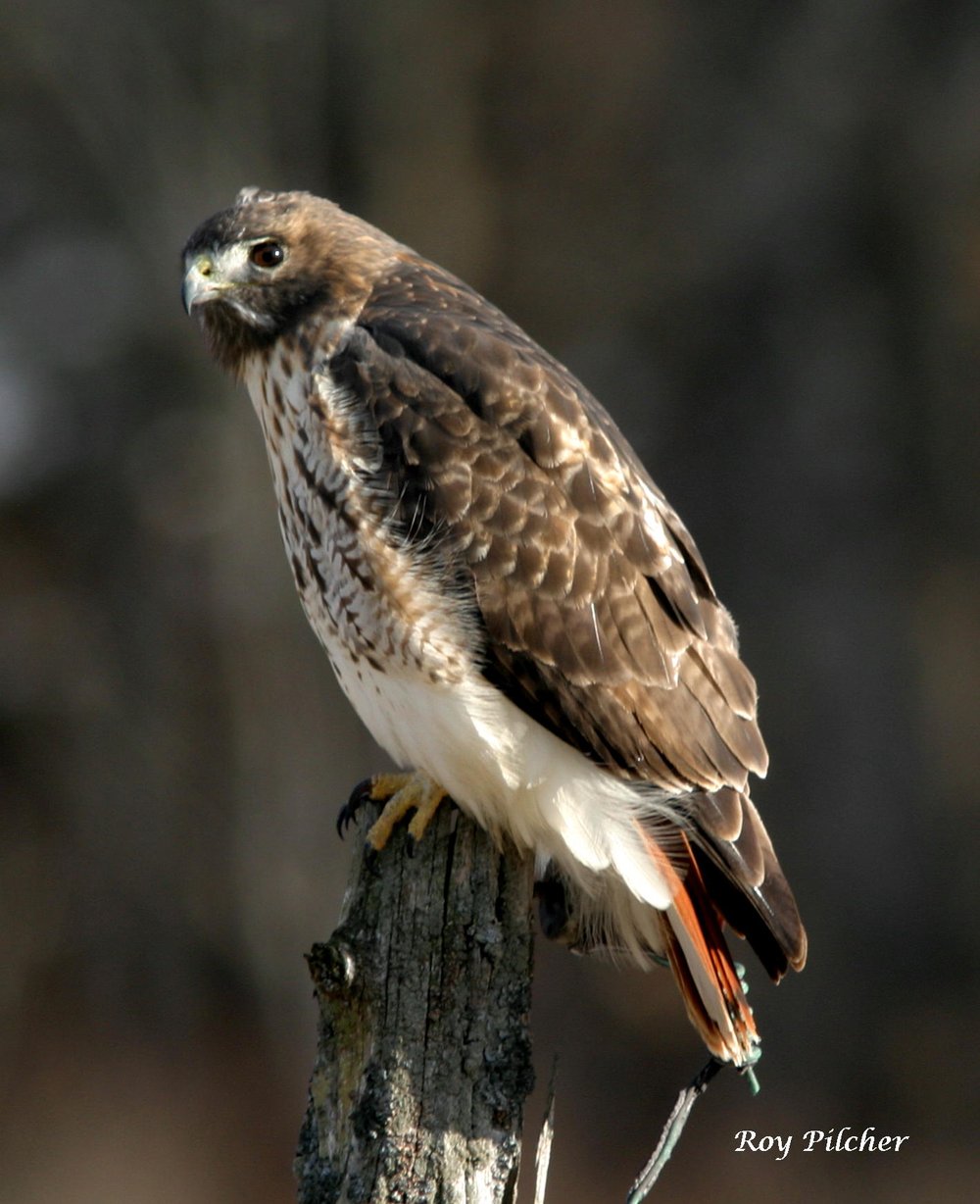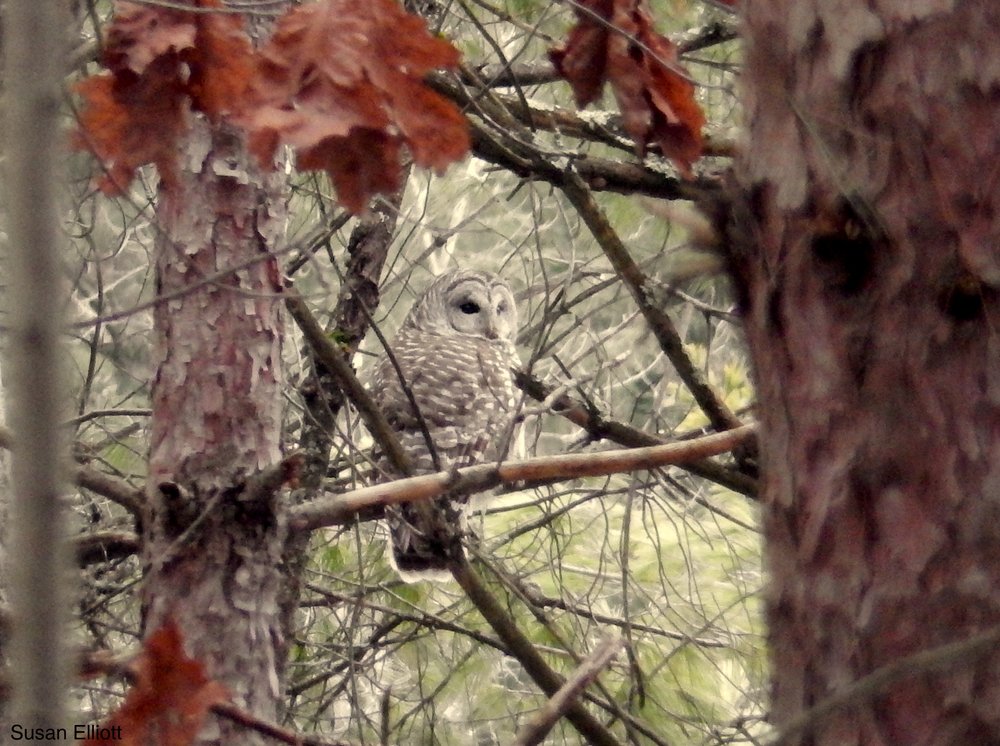 Red-tailed Hawks were well-represented during the CBCTraditionally the Rutland County Annual Christmas Bird Count takes place on the last weekend of December or the first weekend of January depending as to when Christmas day lands. Saturday, December 27 was the designated day for this year’s count, count number 41 for Rutland County and count number 115 for National Audubon since the first bird count was inaugurated by Frank Chapman as an alternative to the “side hunt," a Christmas tradition of shooting birds.
Red-tailed Hawks were well-represented during the CBCTraditionally the Rutland County Annual Christmas Bird Count takes place on the last weekend of December or the first weekend of January depending as to when Christmas day lands. Saturday, December 27 was the designated day for this year’s count, count number 41 for Rutland County and count number 115 for National Audubon since the first bird count was inaugurated by Frank Chapman as an alternative to the “side hunt," a Christmas tradition of shooting birds.
The 15-mile diameter count circle, once delineated, remains the same from year to year. Participation and effort seem to follow an even pattern so “weather” is left as the great arbiter. If one had misplaced the calendar, field observers this year may well have imagined that they were out during the first week in April. Meadows appeared lush and free of snow, streams were flowing strongly and ponds were mostly free of ice. Temperatures were in the 32° to 43° F. range. Some roads and fields were flooded adding to some interruption in coverage.
A reasonable assumption would be that under such weather conditions birds both waterfowl and song would disperse more widely as compared to an immediate frozen and snow covered habitat. And so it was to be. Individual bird numbers came in at 5,705 as compared to a running ten-year average of 8,638. That is almost a 34% decrease! The species count was not so depressed with 50 species tallied just one less than the running ten-year average of 51.1 species.
 CBC field formTwo previous species records were equaled, namely the sighting of two Peregrine Falcons and the sighting of three Great Blue Herons. A new record of 10 individuals was set for Red-bellied Woodpecker. Looking back over the past 40 years of Rutland’s Christmas Bird count records, a single Red-bellied Woodpecker was first observed in 1990, then two in 2003, four in 2004, five in 2010, six in 2011 and finally 10 in 2014. Quite a progression and a nice illustration as to why the collection of all this data is so important!
CBC field formTwo previous species records were equaled, namely the sighting of two Peregrine Falcons and the sighting of three Great Blue Herons. A new record of 10 individuals was set for Red-bellied Woodpecker. Looking back over the past 40 years of Rutland’s Christmas Bird count records, a single Red-bellied Woodpecker was first observed in 1990, then two in 2003, four in 2004, five in 2010, six in 2011 and finally 10 in 2014. Quite a progression and a nice illustration as to why the collection of all this data is so important!
Thanks is due to the 21 field observers who drove 333.7 miles and walked 20.15 miles, spending a total of 65 party-hours on the beat. Thanks is also due to the seven feeder watchers who spent 37.5 hours at home tallying the birds at their feeders.
At the conclusion of the day, 25 weary but content participants enjoyed a great spread at the traditional pot luck supper and count-down at the Proctor Free Library.
Next year’s Christmas Bird count is set for Saturday, January 2, 2016.
 two Barred Owls were observed on the countThe numbers: Great Blue Heron [3], Canada Goose [140], Wood Duck [1], American Black Duck [21], Mallard [133], Common Goldeneye [1], Common Merganser [6], Sharp-shinned Hawk [1], Cooper’s Hawk [2], Red-tailed Hawk [32], Peregrine Falcon [1], Merlin [1], Wild Turkey [84], Wilson’s Snipe [1], Rock Pigeon [305], Mourning Dove [417], Barred Owl [2], Belted Kingfisher [2], Red-bellied Woodpecker [10], Downy Woodpecker [67], Hairy Woodpecker [47], Northern Flicker [2], Pileated Woodpecker [13], Blue Jay [366], American Crow [1063], Common Raven [21], Black-capped Chickadee [697], Tufted Titmouse [69], Red-breasted Nuthatch [17], White-breasted Nuthatch [123], Brown Creeper [9], Carolina Wren [12], Golden-crowned kinglet [1], Eastern Bluebird [35], Hermit Thrush [1], American Robin [4], Northern Shrike [1], European Starling [1027], Common Yellowthroat [1], Northern Cardinal [102], American Tree Sparrow [97], Song Sparrow [6], White-throated Sparrow [2], Dark-eyed Junco [141], Red-winged Blackbird [16], Brown-headed Cowbird [2], House Finch [105], Pine Siskin [29], American Goldfinch [158], House Sparrow [308].
two Barred Owls were observed on the countThe numbers: Great Blue Heron [3], Canada Goose [140], Wood Duck [1], American Black Duck [21], Mallard [133], Common Goldeneye [1], Common Merganser [6], Sharp-shinned Hawk [1], Cooper’s Hawk [2], Red-tailed Hawk [32], Peregrine Falcon [1], Merlin [1], Wild Turkey [84], Wilson’s Snipe [1], Rock Pigeon [305], Mourning Dove [417], Barred Owl [2], Belted Kingfisher [2], Red-bellied Woodpecker [10], Downy Woodpecker [67], Hairy Woodpecker [47], Northern Flicker [2], Pileated Woodpecker [13], Blue Jay [366], American Crow [1063], Common Raven [21], Black-capped Chickadee [697], Tufted Titmouse [69], Red-breasted Nuthatch [17], White-breasted Nuthatch [123], Brown Creeper [9], Carolina Wren [12], Golden-crowned kinglet [1], Eastern Bluebird [35], Hermit Thrush [1], American Robin [4], Northern Shrike [1], European Starling [1027], Common Yellowthroat [1], Northern Cardinal [102], American Tree Sparrow [97], Song Sparrow [6], White-throated Sparrow [2], Dark-eyed Junco [141], Red-winged Blackbird [16], Brown-headed Cowbird [2], House Finch [105], Pine Siskin [29], American Goldfinch [158], House Sparrow [308].
 Roy Pilcher begins the countdown
Roy Pilcher begins the countdown
 Thana McGary and Lana and Fred Bates help with cleanup
Thana McGary and Lana and Fred Bates help with cleanup Larry Booker tallies the numbers
Larry Booker tallies the numbers